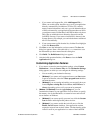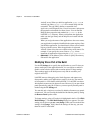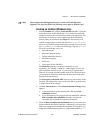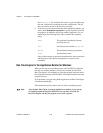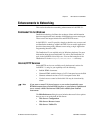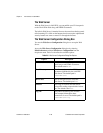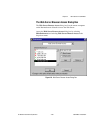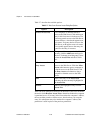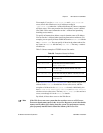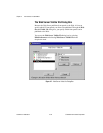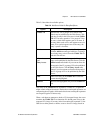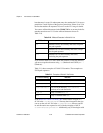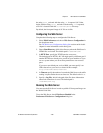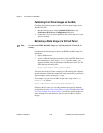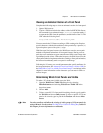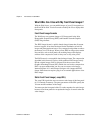
Chapter 2 New Features in LabVIEW 5.1
©
National Instruments Corporation 2-51 LabVIEW 5.1 Addendum
For example, if you give a.test.site.com and b.test.site.com
access, but do not extend access to all addresses ending in
.test.site.com (where the * wildcard indicates all), the two computers
still have access. If no entry matches the client address, access is denied.
(See Table 2-8 for more information on the * wildcard and permitting
matching access entries).
To specify an Internet host address, enter its domain name or IP address.
You can use the * wildcard when specifying Internet host addresses. For
example, you can specify all hosts within the domain
domain.com with the
entry
*.domain.com. You can specify all hosts in the subnet whose first
two octets are
130.164 with the entry 130.164.*. The entry * matches
all addresses.
Table 2-8 shows examples of TCP/IP Access List entries.
In the Web Server Browser Access Dialog Box shown earlier in Figure 2-6,
all hosts in the
site.com domain have access to the server, with the
exception of all hosts in the
test.site.com domain. Additionally, the
hosts
a.test.site.com, b.test.site.com, and 130.164.123.123
also have access to the server. The host
public.site.com does not have
access, even though it is in the
site.com domain.
By default, all hosts have access to the Web Server.
Note If the Web Server runs on a system that does not have access to a DNS server,
do not use domain name entries in the Access List. Requests to resolve the domain
name or an IP address fail, slowing down the system. For performance reasons,
place frequently matched entries toward the bottom of the Access List.
Table 2-8. Examples of Access List Entries
Access String Matches
*
All hosts
test.site.com
The host whose domain name is
test.site.com
*.site.com
All hosts whose domain names end with
.site.com
130.164.123.123
The host with the IP address 130.164.123.123
130.164.123.*
All hosts whose IP addresses start with
130.164.123



